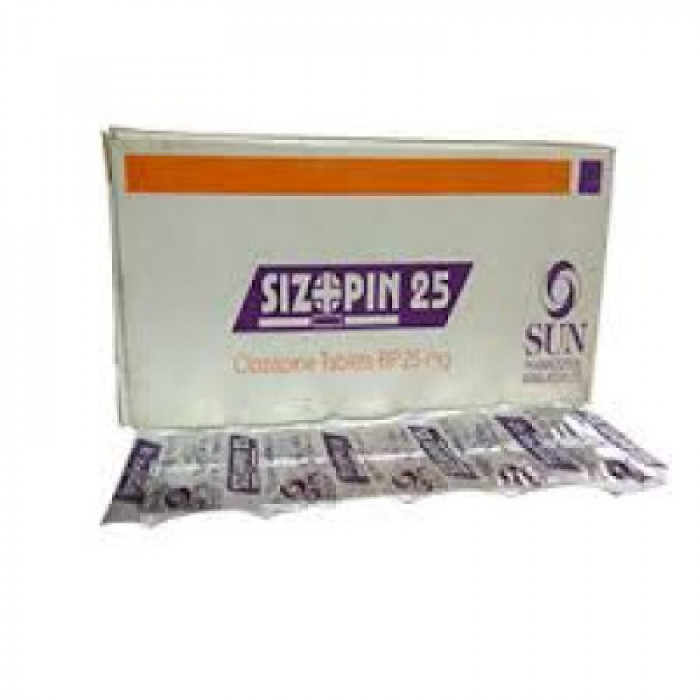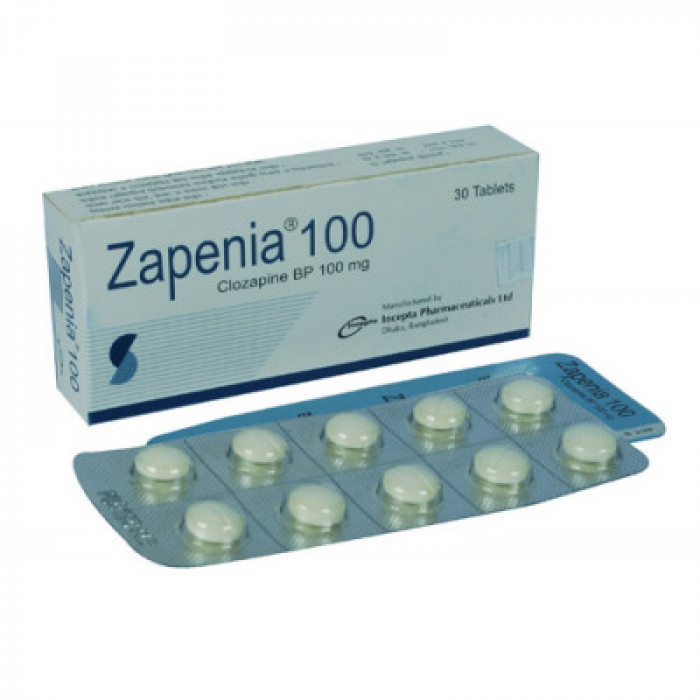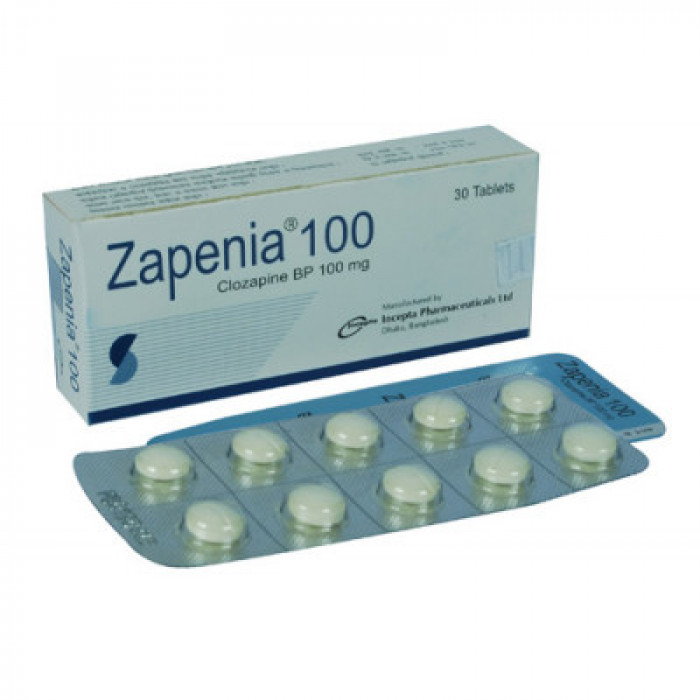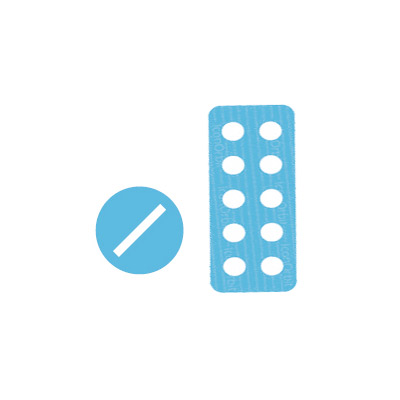
✔ 100% Authentic Product
👁️ Currently Viewing 1732
Type: Tablet. Generic Name: Clozapine 25mg & 100mg/tablet. Manufacturer/Distributor: Sun Pharma
📄Prescription Required
Discount
Price: ৳ 29
MRP:
৳
30
5%
Off

100% Genuine Products, Guaranteed

Safe & Secure Payments, Always

Fast, Secure & Efficient Delivery

Proper Packaging
 Cash on Delivery - All over Bangladesh
Cash on Delivery - All over Bangladesh Regular Delivery - 12-24 Hours, Dhaka City* Charge Tk.39-59
Regular Delivery - 12-24 Hours, Dhaka City* Charge Tk.39-59 Regular Delivery - 24-48 Hours, Other Cities* Charge Tk.99-110
Regular Delivery - 24-48 Hours, Other Cities* Charge Tk.99-110
 ফ্রি ডেলিভারিঃ - ৯৯৯ টাকা+ অর্ডারে, ঢাকা
শহরে
ফ্রি ডেলিভারিঃ - ৯৯৯ টাকা+ অর্ডারে, ঢাকা
শহরে ফ্রি ডেলিভারিঃ - ২৯৯৯ টাকা+ অর্ডারে, ঢাকার
বাহিরে
ফ্রি ডেলিভারিঃ - ২৯৯৯ টাকা+ অর্ডারে, ঢাকার
বাহিরে
100% Genuine Products, Guaranteed
Safe & Secure Payments, Always
Fast, Secure & Efficient Delivery
Proper Packaging
 Cash on Delivery - All over Bangladesh
Cash on Delivery - All over Bangladesh Regular Delivery - 12-24 Hours, Dhaka City* Charge Tk.39-59
Regular Delivery - 12-24 Hours, Dhaka City* Charge Tk.39-59 Regular Delivery - 24-48 Hours, Other Cities* Charge Tk.99-110
Regular Delivery - 24-48 Hours, Other Cities* Charge Tk.99-110 ফ্রি ডেলিভারিঃ - ৯৯৯ টাকা+ অর্ডারে, ঢাকা
শহরে
ফ্রি ডেলিভারিঃ - ৯৯৯ টাকা+ অর্ডারে, ঢাকা
শহরে ফ্রি ডেলিভারিঃ - ২৯৯৯ টাকা+ অর্ডারে, ঢাকার
বাহিরে
ফ্রি ডেলিভারিঃ - ২৯৯৯ টাকা+ অর্ডারে, ঢাকার
বাহিরে
✅ Description:
Indications of Sizopin 25 Tablet
Clozapine is used to treat schizophrenia in people who are resistant to or intolerant of traditional antipsychotic medications. Parkinson's disease-related psychosis.
Pharmacology of Sizopin 25 Tablet
Clozapine is classed as a 'atypical' antipsychotic medicine because its dopamine receptor binding profile and effects on certain dopamine-mediated behaviors differ from those of other typical antipsychotic drug products. Clozapine, in particular, inhibits dopamine binding at the D1, D2, D3, and D5 receptors and has a high affinity for the D4 receptor. This evidence supports the theory that Clozapine is more active at limbic dopamine receptors than striatal dopamine receptors. This could explain Clozapine's relative lack of extrapyramidal side effects. Clozapine is also an antagonist at adrenergic, cholinergic, histaminergic, and dopaminergic receptors.
Dosage & Administration of Sizopin 25 Tablet
Schizophrenia: Adult over 16 years, 12.5 mg once or twice (elderly 12.5 mg once) on first day then 25-50 mg (elderly 25-37.5 mg) on second day then increased gradually (if well tolerated) in steps of 25-50 mg daily (elderly max. increment 25 mg daily) over 14-21 days up to 300 mg daily in divided doses (larger dose at night, up to 200 mg daily may be taken as a single dose at bedtime); if necessary may be further increased in steps of 50-100 mg once (preferably) or twice weekly; usual dose 200-450 mg daily (max. 900 mg daily)
Psychosis in Parkinson's disease: Adult over 16 years, 12.5 mg at bedtime then increased according to response in steps of 12.5 mg up to twice weekly; usual dose range 25-37.5 mg at bedtime, usual maximum 50 mg daily; exceptionally, dose may be increased further in steps of 12.5 mg weekly to maximum 100 mg daily in 1-2 divided doses.
Interactions of Sizopin 25 Tablet
Concurrent use of myelosuppressants can exacerbate myelosuppression. Clozapine has the potential to interact with other CNS active medications as well as alcohol. When taking benzodiazepines or other psychotropics, orthostatic hypotension can occur. Clozapine has a high protein binding affinity. Other medications that are also heavily protein bound may be able to displace it. Clozapine, on the other hand, may displace protein-bound medicines (e.g. warfarin, digoxin). Cimetidine may lower Clozapine levels in the blood.
Contraindications
Severe cardiac disorders (e.g. myocarditis); renal impairment (avoid if creatinine clearance is less than 10 mL/min); history of neutropenia or agranulocytosis; bone-marrow disorders; paralytic ileus; alcoholic and toxic psychoses; history of circulatory collapse; drug intoxication; coma or severe CNS depression; uncontrolled epilepsy; breast-feeding
Side Effects of Sizopin 25 Tablet
Constipation, dizziness or lightheadedness (mild), sleepiness, headache (mild), increased watering of the mouth, nausea or vomiting, and unexpected weight gain are all common adverse effects. Abdominal discomfort or heartburn, as well as mouth dryness, are less prevalent side effects.
Pregnancy & Lactation
Clozapine has not been adequately studied in pregnant women. Animal studies indicate that there are no significant impacts on the fetus. Clozapine can be used throughout pregnancy if the doctor thinks it's required. Clozapine appears to be released in breast milk, according to animal research. As a result, women who are on Clozapine should not breastfeed their children.
Precautions & Warnings
Medication should not be abruptly stopped; it should be weaned off over a period of 1-2 weeks. Monitor patient for psychosis and cholinergic rebound if symptoms require abrupt withdrawal (leukopenia, myocarditis, cardiomyopathy) (headache, nausea, vomiting, diarrhea). Patients above the age of 65 are more vulnerable to negative effects (including agranulocytosis, cardiovascular, anticholinergic, and tardive dyskinesia). Agranulocytosis is a serious and potentially fatal condition. WBC testing should be done weekly for the first six months of treatment; beyond that, if appropriate WBC numbers (WBC 3000/mm3, ANC 1500/mm3) are maintained, WBC counts should be checked every other week. WBCs must be checked once a week for the first four weeks after therapy is stopped. In patients receiving other marrow suppressive medications, use with caution. Clozapine has been linked to eosinophilia, which may necessitate a temporary or permanent discontinuation of treatment. May produce orthostatic hypotension and tachycardia; use with caution in individuals at risk of hypotension or in those who would be sensitive to brief hypotensive episodes (cardiovascular disease or cerebrovascular disease). The use of psychotropics and benzodiazepines at the same time may raise the risk of serious cardiopulmonary responses.
Storage Conditions
Do not store above 30°C. Keep away from light and out of the reach of children.
⚠️Disclaimer:
At ePharma, we’re committed to providing accurate and accessible health information. However, all content is intended for informational purposes only and should not replace medical advice from a qualified physician. Please consult your healthcare provider for personalized guidance. We aim to support, not substitute, the doctor-patient relationship.









